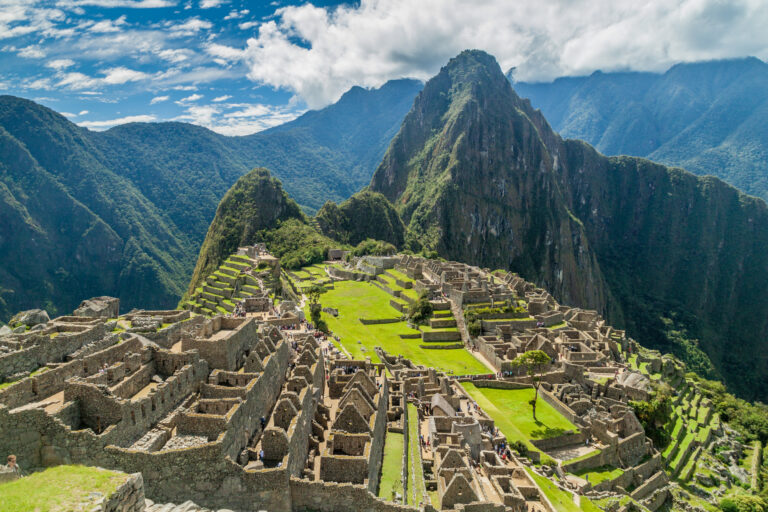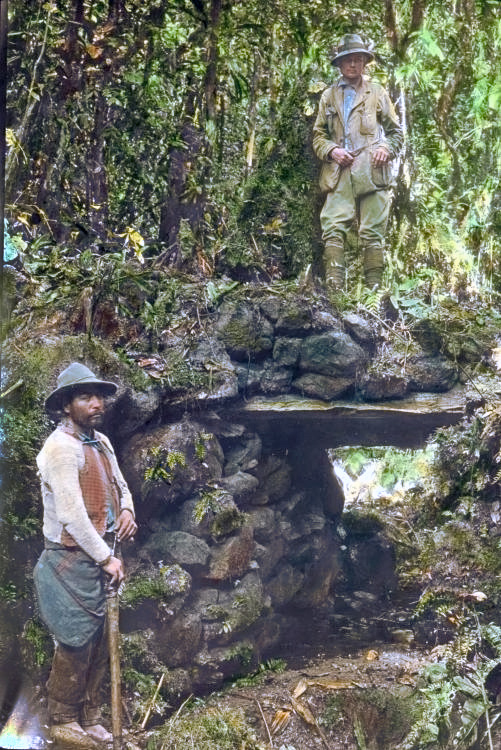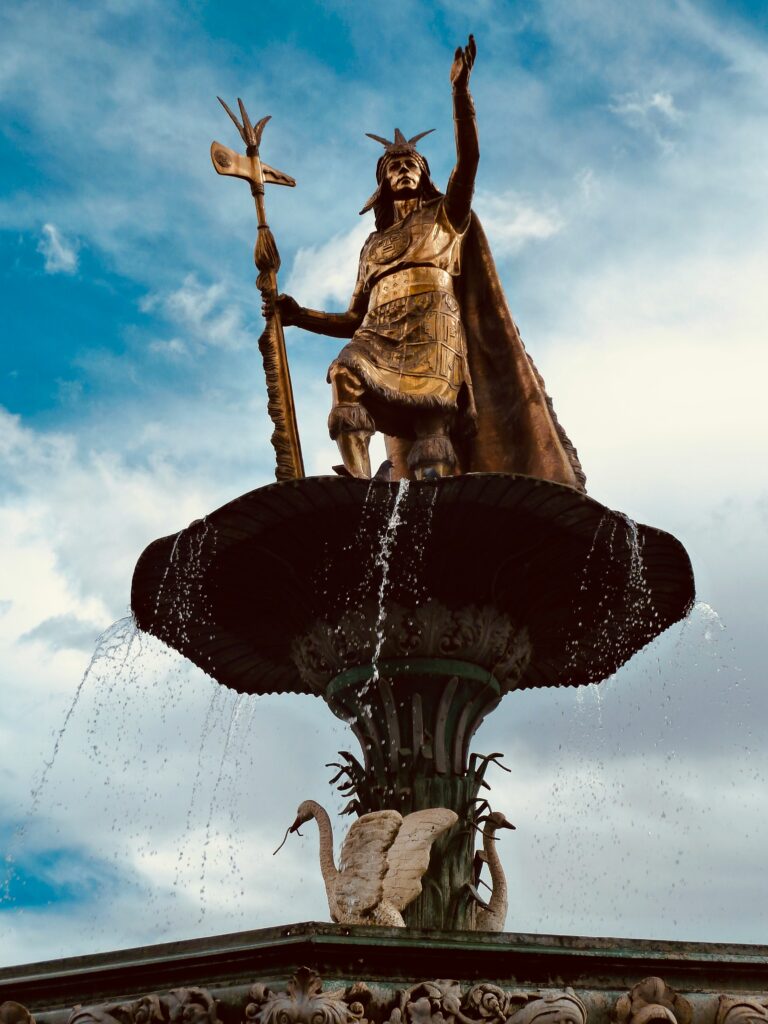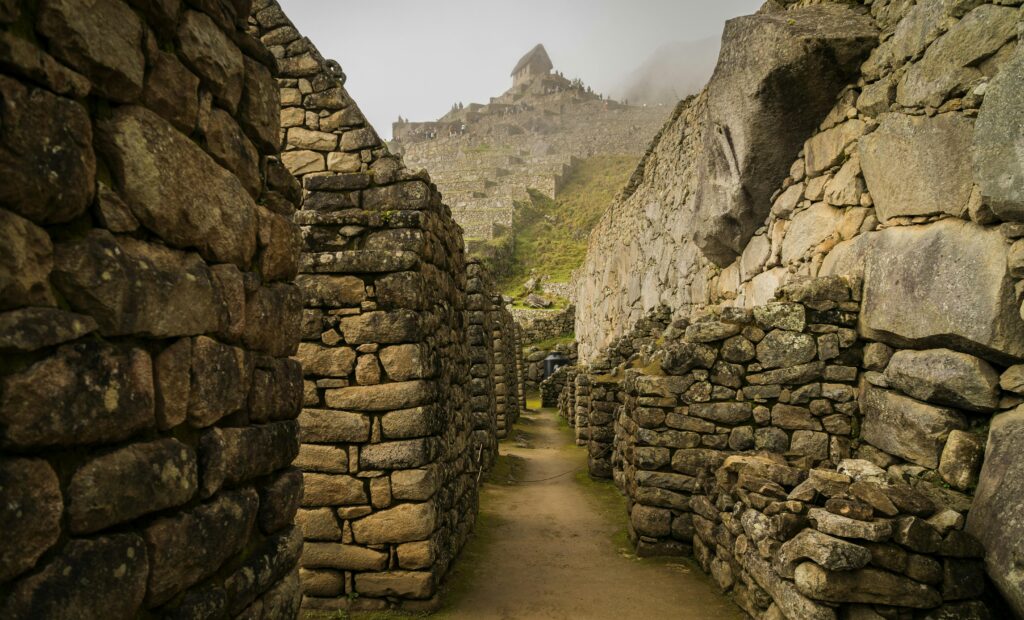
Leading up to his 1911 expedition to the Sacred Valley of the Incas, American explorer Hiram Bingham III would barricade himself in the Yale University library, poring over as much Latin American history as he could get his hands on. After first developing an interest in Incan culture when he visited Choquequirao in 1909, Bingham was preparing to travel to Peru in search of Vitcos and Vilcabamba, the lost Inca capitals. What he ultimately found, though, was beyond even his wildest dreams.
Hiram Bingham first laid his eyes on Machu Picchu – the remarkably well-preserved Inca citadel perched high in the Peruvian Andes – on July 24, 1911. In the years since Bingham’s momentous discovery, Machu Picchu has become an international symbol of the Inca empire and one of the most famous archaeological sites on the planet. Join us as we investigate the enigmatic history of the “Lost City of the Incas” – much of which remains shrouded in mystery to this day.

Hiram Bingham (top right) | Peru, 1911. Source
Much like the Moche, the Chimú, the Nazca, and other ancient South American civilizations, the Inca did not have a traditional written language, leading many early experts to speculate on Machu Picchu’s origin – and the reason for its ultimate abandonment. However, the modern-day consensus among many archaeologists is that the powerful king Pachacuti Inca Yupanqui – the ninth ruler of the Inca Empire who reigned from 1438 to 1471 – ordered the construction of Machu Picchu in the mid-15th century. Approximately 5,000 Incans then spent the next 20 years building the mountaintop estate, which served as the royal residence for the king and his family upon its completion.

Statue of the Inca king Pachacutec in Cuzco, Peru
King Pachacuti and his family weren’t Machu Picchu’s only inhabitants, though – at its height, experts estimate that approximately 750 people lived there, including nobles, guests, and servants. But perhaps even more surprisingly, scientists analyzing skeletal remains found at the site have determined that many of the city’s inhabitants lacked the chemical and osteological markers common to inhabitants of the Sacred Valley of the Incas. Therefore, it is widely accepted that much of Machu Picchu’s population was made up of immigrants.
Like many of the world’s other ancient civilizations, the Inca were quite ahead of their time. Machu Picchu’s construction alone was a major architectural achievement, but it only tells a small portion of the story – the Inca also developed innovative medical treatments, terraced agriculture, irrigation systems for farming, and sophisticated road systems.
Experts agree that Machu Picchu was abandoned in the mid-16th century, less than 100 years after completion. But the reason for its demise remains a mystery. Spanish conquistadors invaded the Inca Empire in 1532, so it’s possible that Machu Picchu fell before the swords and horses of these European foes. Curiously, however, Machu Picchu’s remains show no signs of Spanish conquest — a stark departure from many of its contemporary Inca cities.
So, what’s the most likely explanation? Some experts believe that Machu Picchu’s residents may have succumbed to European diseases – likely some combination of measles, syphilis, and smallpox – before the Spanish ever discovered the city. Or the inhabitants may have been forced to flee, either due to resource depletion or an approaching Spanish army.

While the true explanation for Machu Picchu’s abandonment continues to elude experts, one thing is unquestionably true – the citadel stands as the most important Inca monument today. Approximately 1.5 million visitors cross Machu Picchu off their travel wish lists every year, and we invite you to join us on our Treasures of Peru and Machu Picchu to the Galapagos to discover this iconic site for yourself.
By using this website you are agreeing to our Cookie Policy.